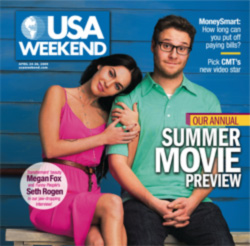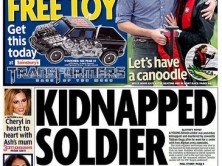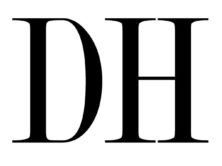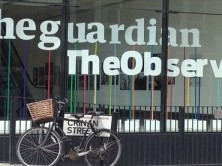
USA Weekend's cover "feature" story turned out to be only 200 words long. Look at the teaser in the upper right-hand corner. I know that I'm dating myself but, hey: "Where's the beef?"
The print version of USA Weekend promised an article on its front cover. It really looked good. The title, “MoneySmart: How long can you put off paying bills?” was blared from a teaser in the upper right-hand corner of the front page.
I was looking forward to reading some helpful tips for coping with this bad economy. Who isn’t? But when I turned to the page, there was no feature story, but only a 200-word article. Hey, that’s bait and switch. Hey, USA Weekend, “Where’s the beef?” On the Internet version of the magazine article, USAWeekend.com, the impact is not quite so jarring. The vertical list placement of the feature articles on the home page has a smaller font and does not give readers the same frustrating sense of being interested…then “had” after you click the link.
This situation illustrates an ongoing problem with publications trying to freely move content back and forth between their print version and their web version without alterations.
In this case, when “MoneySmart: How long can you put off paying bills?” is displayed on a web page, the 200 words, written in a larger front than the print version, don’t strike readers as dramatically scant, as it does when the text is on a printed page. The bait and switch is noticed in the print version, too, because the 200-word “feature” is given the same weight on the front page teaser as the other feature articles, like the 1000-word “2009 Summer Movie Roundup” and the 1783-word interview with Megan Fox and Seth Rogen.
A reader’s sense of space is totally different on the web page than in the print edition. As you are scrolling the USA Weekend Web page, for example, time is the dimension that comes into play, rather than space, as it would if you were facing the daunting prospect of reading a 12-page print version of an article.
Journalism professionals want content to be easily re-purposed between print and web, in order to cut down on costs. This USA Weekend MoneySmart piece indicates that these cost-saving efforts need to get smarter.




